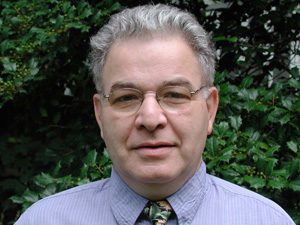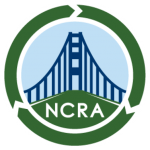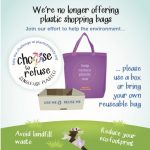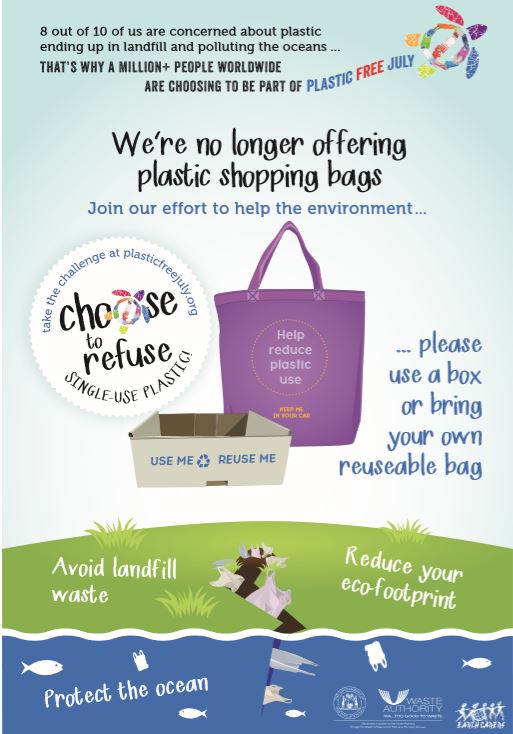 A REVIEW OF PEAK PLASTIC: THE RISE OR FALL OF OUR SYNTHETIC WORLD, JACK BUFFINGTON, PRAEGER, 2019
A REVIEW OF PEAK PLASTIC: THE RISE OR FALL OF OUR SYNTHETIC WORLD, JACK BUFFINGTON, PRAEGER, 2019
By Neil Seldman, Waste to Wealth Initiative, Institute for Local Self Reliance, Washington, DC, 5/25/19
A long-term NCRA collaborator, Seldman also serves as co-chair of the Save the Albatross Coalition with Captain Charles Moore of Algalita Marine Research and Education.
Editor’s Note: Click for a PDF Version of this review or a free SANET download of Peak Plastic
Hourly, it seems, an email arrives with fresh news about the planetary crisis posed by plastic production and waste. The earth’s ocean, a source of life, is turning into seas of plastic waste, floating bits of disposed packages and microscopic particles as the plastic breaks apart. Invasion of the entire biosphere is now a reality. “We are no longer looking at a plastic ocean,” says Captain Charles Moore of Algalita Marine Research and Education, “we are now talking about plastic fish and plastic people.”[1] The issue is being addressed by federal agencies such as the National Oceanographic and Atmospheric Administration (part of the Department of Commerce), foundations such as the Ocean Conservancy, and international environmental organizations such as Greenpeace, the Global Anti Incineration Alliance, and the Save the Albatross Coalition – a campaign of Zero Waste USA.
The U.S. Congress held hearings on April 30 to explore Emerging Technologies in Plastics Recycling and the technology gaps that drive up the cost of recycling that fall on municipalities and businesses. The Center for International Environmental Law calculates that in 2019, plastic production and incineration will add more than 850 million metric tons of greenhouse gases to the atmosphere — the equivalent of pollution from 189 new 500-megawatt coal-fired power plants. In addition, other scientists point to increased methane releases as photodegradable plastic breaks down more readily in sunlight. Even the American Chemistry Council, a trade association representing U.S. chemical companies, concedes the need for “fostering the transition to “zero waste.” Fortune 500 companies that formed the Alliance to End Plastic Waste have pledged $1.5 billion to address the problem.
Plastic pollution issues engulf the Chinese economy as well. The 2017 National Sword Policy, China’s ban on imports of certain mixed recyclables, was in large part a response to the outcries against the primitive plastic recycling system, which moved materials from ports to rural areas for ‘processing’ that contaminated soil and water and damaged the health of those engulfed in plastic smog from the burn-off of residual materials. Videos of ocean plastic pollution have also aroused the Chinese public.
A Comprehensive Solution?
There is no comprehensive path forward to stop the pollution and prevent future contamination so that the world’s vital support systems can recover.
Jack Buffington, a supply chain expert, offers an approach in his book Peak Plastic that integrates the synthetic world of plastic with the natural world by placing once-used plastic back into production supply chains.[2] He lays out the prospect of sustainable local economies, with plastic materials and nature living side by side. Proper use and reuse of plastics can lead to a decentralized economy, a boon to urban ghettos in the U.S., Asia, and Africa, as well as to rural Chinese villages suffering from plastic smog, water pollution, poverty, and poor health. He looks to “innovators, or those companies and government officials who will turn plastic waste into economic viability within a private enterprise model…for the betterment of communities,” as engines of change.
Is this vision technically and economically feasible using the five-step program Buffington presents? Is it politically feasible? Will it take an international mobilization, a grass roots political ‘levee en masse’ to engage industry, elected officials, and policy managers to make fundamental change to business as usual?
Business as Usual is Not Acceptable
Business as usual means uncontrolled production of virgin plastic, even as less than 10% of plastic produced is recycled or reused. It also means recognizing the positive benefits, in fact essential benefits, of plastic products in our daily lives and in the economy. Buffington estimates that by 2030 the earth will reach Peak Plastic, that is, when the marginal benefit of plastic use to society will be less than its detrimental cost to the environment. We are clearly running out of time if he is even close to being accurate.
How Could Something So Good Be So Bad?
Over a few generations, Buffington points out, plastic use has become a “marketing marvel and, at the same time, a planetary crisis.” Since just prior to World War II, annual plastic use has grown from 2 million tons to 380 million tons today.
Buffington pays due homage to beneficial attributes of the material named after the Greek word for “to mold to a form.”
The World War II effort led to a 300% increase in production, making it an essential ingredient for winning the war as other materials fell into short supply. Plastic products were used in health care, clothing, transportation, building materials, packaging, to extend the shelf life of food, and to feed the post-war consumer economy. “In a surreal sort of way plastic is our modern day superhero, able to defy the laws of nature though 50% lighter than steel and at the same time can be in your body intentionally as a stent to open blocked arteries.”
Buffington’s description of the dark side of the plastic revolution suggests the dystopia presented in Bookchin’s Our Synthetic Environment.[3] Even as plastic is the material of choice, it is at odds with nature. It does not break down and return to a natural form. It can cross membranes in the body. Resins, additives, stabilizers, anti-static agents, biocides, flame-retardants, plasticizers, all ‘lurk within the polymer,’ and therefore within the human body and food chain, with unknown consequences for public health and the biosphere. Plastic nanoparticles escape into waterways with every laundry load. Plastic indeed is a ’messy innovation’ that has reached the world’s highest peaks and penetrated the deepest crevices in the oceans. It is a modern day well-intentioned Frankenstein, gone haywire. We cannot recycle our way out of the plastic dilemma. The U.S. EPA reports that the 2015 overall U.S. plastic recycling rate was a dismal 9%[4]. Obviously it hardly impacts the supply chain for virgin plastic manufacturing. Plastic production continues to grow as recycling rates stagnate.
Buffington’s Five Step Program
Step 1: Stop the bleeding by making the plastic industry transparent. Government regulators have failed to protect the country from the obvious threats of plastic pollution. Only a fully informed public can mobilize for change. In addition, a worldwide ban on micro beads and glitter must be put in place. Conventional investment in solid waste management can drastically reduce the 8 million tons of plastic dumped into the oceans annually; 60% from only five countries – China, Indonesia, the Philippines, Thailand and Vietnam. The estimated near-term cost is $5 billion.
Step 2: Introduce a private-public open source/open access for plastic innovators, which can lead to a design revolution in materials and products. This will take enlightened stockholders.
Steps 3 and 4: Replace traditional recycling, which is a distraction,[5] with sustainable polymerization: that is, depolymerization (Step 3) and repolymerization (Step 4).[6] Each city, Buffington foresees, could have small-scale production of its own water and soda bottles, with a closed loop de- and re-polymerization system in place. The term “economy of scale in linear production systems will be a relic of the past….Through a combination of automation, 3-D printing and digital design.” Flint, Michigan will benefit environmentally and economically from a de- and re-polymerization production system, rather than a return to refillable beverage containers, the author avers.
Step 5: Invest in measuring technology so that we can see what we currently can’t. “There must be a push for portable powerful devices to detect and then access for clean up.”
Inconsistencies and Barriers
Peak Plastic provides rational and doable steps to both control the hemorrhaging of plastic into the environment and tame the material so that the natural world and this unique material can live side by side. The rise of open source manufacturing is in sight. Hopes for this future are based on the emergence of an open source system that will inform organized citizens, government agencies and private firms. “3D printing and open source design will definitely be disruptors in the 21st century by many accounts.”[7]
Is Peak Plastic too optimistic about the possibility of change among corporate leaders, considering past bad behavior? Is ‘clean up’ a credible solution once plastics in the ocean start breaking down into minute particles? What are the comparative costs of de- and re-polymerization? And, critically, can progress be made along the lines Buffington favors without a grassroots, bottom-up movement?
The grassroots recycling/anti-incineration/zero waste movement has won the hearts and minds of the country in the past 50 years. This movement led to new rules that established post-World War II recycling in the U.S.: mandatory recycling, minimum content, unit pricing, purchasing preferences, capital accumulation, and investment programs. These rules made recycling part of everyday life in U.S. cities and towns. No fundamental change can occur without the mobilization of this homegrown recycling, anti-incineration, and zero waste constituency.
In fact, this movement, which crosses gender, race, class, and age, has already started to achieve the bans essential to pushing back on the virgin plastic industry. State and local bans on polystyrene, single use food wares (e.g. plastic straws and cutlery), and plastic bags are now common throughout the U.S. Kraft Foods, Aldi, Amcor, and Nestle’ have pledged to have zero waste packaging (reusable, recyclable, or compostable) by 2025. But pledges from Fortune 500 companies have been issued for decades with no implementation. Nothing works like organized pressure from below, as people exert their rights as citizens to change the rules and as consumers who purchase goods.
The Save the Albatross Coalition has supported ‘connect the cap’ legislation in California which will require bottlers to leash bottle caps, which when loose in the sea resemble food and are deadly to albatross chicks. While AB 319 and AB 2779 did not pass the State Assembly last session, the Coalition will work to get this bill introduced again next year. In addition, the Coalition is recruiting local governments to file nuisance lawsuits against brand name companies whose containers, wrappers and bottle caps are found on their beaches. “We are acting locally to solve a global crisis,” said Rick Anthony, a recycling pioneer and chair of the Coalition and the Zero Waste International Alliance. “We have to control this at the home and then at the local level. The protection of our quality of life and sustainability starts with local actions.”
Washington State passed a 0.15% tax on grocery and convenience stores and other retailers on items commonly tossed on the street, i.e. litter. This tax goes into a fund to address all of those items you see littered along the highway and in public spaces. In California, Senate Bill 54 and Assembly Bill 1080, the California Circular Economy and Plastic Pollution Reduction Act, would reduce unnecessary packaging, cut down our reliance on disposable items, and redesign products to be truly recyclable or compostable. Both of these state bills have passed out of their house of origin and will be considered by the other house later this session.
We Must Make Haste
Private industry is responding to the worldwide plastic pollution crisis. No less than 40 companies in the U.S. and Canada are operating low-grade plastic plants at commercial scale. Another 20 are similarly investing in transformational technologies that depolymerize and then repolymerize plastic waste into high value virgin quality pellets for food grade packaging.
Air Canada started to reduce single use plastic on its flights this year, moving towards the goal of eliminating it altogether. Restaurant chains are beginning to recycle plastic gloves used by food preparers with the glove manufacturer.
Not all ‘innovation’ is positive. Dow Chemical and Hefty companies want to build pyrolysis plants throughout the country to turn low-grade plastics into fuels. Phoenix, AZ just contracted with a company to use similar thermal depolymerization to manage recovered plastics.
Hard work lies ahead. The Hefty Energy Bag hard-to-recycle plastics incineration program – now in Cobb County, GA, Boise, ID, Lincoln, NE and Omaha, NE, is a wake-up call. Of the 40 new companies offering plastic recycling alternatives, 27 are thermal processes, or incinerators. The Baltimore Clean Air Act, written by Energy Justice Network and passed unanimously by the City Council, is an example of one tool to force best available control systems on all plants. Taxes on hard-to-recycle plastics and other packages are needed to increase the cost of wasting for cities and businesses. Outright bans on new virgin plastic capacity are in order, given the global emergency. Reduction in plastic consumption is the key goal here.
We cannot recycle our way out of the plastic conundrum. We have to control its production and eliminate post-consumer waste.
This bottom-up citizen’s push and the current scramble by innovative companies to return reprocessed plastic to the supply chain of commerce can work, but it is not clear if there is time before we reach Peak Plastic in 2030.
Peak Plastic is optimistic that we can, in this short time frame. But only if we transcend the false narrative that pits a growing economy against a cleaner environment, and implement the rules needed to reign in laissez faire plastic production.
Footnotes
[1] See, Moore and Cassandra Phillips, Plastic Ocean: How a Sea Captain’s Chance Discovery Launched a Determined Quest to Save the Oceans, 2012; Also, Moore, Charles, “Invasion Of The Biosphere By Synthetic Polymers; What Our Current Knowledge May Mean For Our Future” Acta Oceanologica Sinica, April 2019
[2] Buffington, PhD, is Professor of Supply Chain Management at University College and the Daniels College of Business at the University of Denver. He has ample industry credentials as well, and previously authored The Recycling Myth, Praeger, 2015
[3] Murray Bookchin, Our Synthetic Environment, Harper & Rowe, 1975
[4] U.S. Environmental Protection Agency, Facts and Figures about Materials, Waste and Recycling, Plastics: Material-Specific Data, 2015
[5] For Buffington’s full argument against traditional recycling of plastic see, The Recycling Myth: Disruptive Innovation to Improve the Environment, Praeger, 2015
[6] There are several types of depolymerization including hydrolysis, glycolysis, methanolysis, and thermal (pyrolysis).
[7] Fast Company, Adele Peters, Precious Plastic: These DIY Machines Let Anyone Recycle Plastic Into New Products, 10/7/2017






